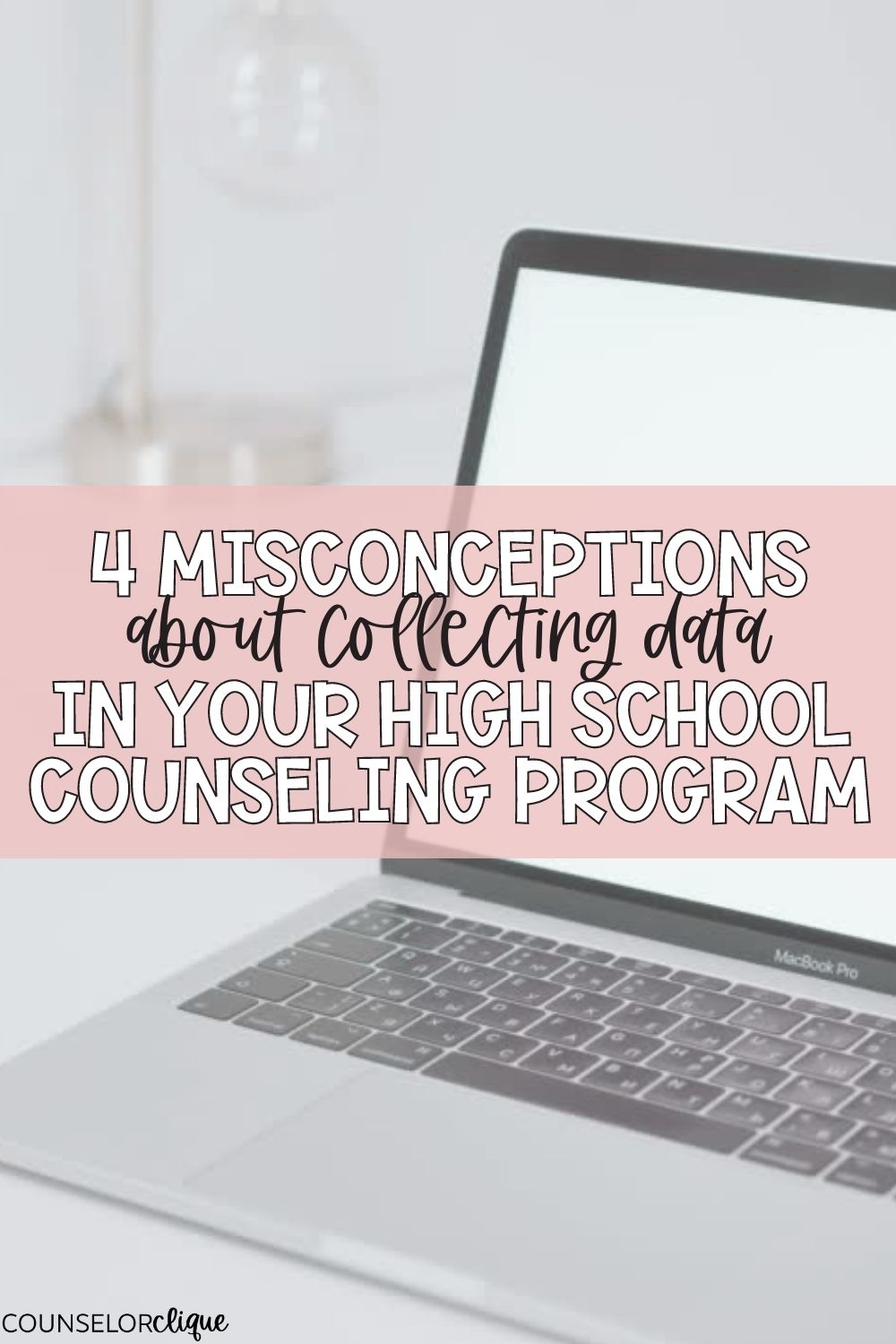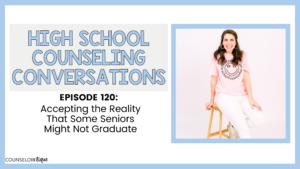Collecting data is the thing you want to get better at but just don’t know where to start. It’s way easier to make excuses and never make progress on this front, right? You wish you used more data to inform your school counseling program, but that’s also extremely intimidating. When you use data, you’re proving to be an advocate and a leader in your school.
Why use data in the first place? Data helps intentionally plan your school counseling program so that what you’re doing and how you’re serving students is actually effective. You want to be sure that what you’re doing matters and makes a difference in the lives of your students. Data speaks when your voice isn’t being heard. (Data is your admin’s love language, so are you sharing it with them?)
You CAN collect data and do it efficiently. Does that sound like a distant, faraway dream? Here are 4 popular misconceptions about collecting data (or reasons why you’re not collecting data) in your high school counseling program. I want to push back on these reasons and offer some insights into how to change your data collection mindset as a high school counselor.

1- “Collecting data takes too much time.”
I can see how this would be the mindset if your goal was to take your program from ZERO data collection to DATA PRO program overnight. It would take a lot of time to set up systems, pull spreadsheets of numbers, interpret those numbers, make programmatic changes, and share it all with your stakeholders. That’s a ton of work.
Remember the end goal: your data should be used to inform your school counseling program and show off your impact.
If you’re someone who wants some rhythms and routines (not me, so not the first place I’d start), your data collection could be a daily thing. Can you set up a digital check-in system in your lobby that collects data passively? Can you track your time using a system like SCUTA (there’s a free trial)? Can you just start small by trying to USE your calendar? If you have some of these routines set up, you may discover trends over time with your numbers.
However, your data collection doesn’t HAVE to be ongoing. If data collection is intimidating to you, then don’t do it all the time! START SMALL! You can pull data at the beginning and end of the school year, the beginning and end of each semester, or the beginning and end of each quarter.
2- “I don’t know how to collect data.“
There is so much already at your fingertips within your school already! There is already data being collected in places at your school. And you don’t even have to do a pre or post-test survey to find it!
Are you seeing trends that just don’t make sense in your students’ academics, attendance, or behaviors? It’s time to dig a little deeper there. Consider what questions you want to know the answers to and pursue that data path. Download this free School Counseling Data Collection Ideas Guide to help you brainstorm places to start collecting data some simple in your school!
3- “I’m not a numbers person, so collecting data seems nearly impossible.“
“My brain just doesn’t seem to work like that.” Don’t get me wrong. I love seeing the information and the results, but it’s not my natural instinct to go after those numbers and organize them in a way that makes sense.
Have you caught yourself saying, “I’m just bad at math, and I don’t know what the numbers mean.” If you’re not sure how to interpret what you’ve collected, tag another counselor or administrator whose strength is numbers or even recruit a math teacher to help you!
Google Forms can be your best friend with this one. If you’re collecting data through surveys, collect those answers digitally. Let it put your numbers into spreadsheets and graphs FOR you! This is a great place to start if you’re not sure of how to present your data in a way that makes sense.
Don’t try to disaggregate data for your entire school. Start with a small sample size… like examining one piece of data at one grade level or something smaller and more specific like tenth-grade boys’ academic failures for quarter one. Something is better than nothing!
4- “I might make a mistake when collecting data and get it wrong.”
“And if I get it wrong, I’ll feel like a failure.”
But what if you get it right? What if you discover something super valuable from a small bit of data collection that changes the trajectory of the services you offer for your students? My most successful ideas and initiatives have come from starting with one piece of data that I found from my students or school (for example, initiatives like Mindfulness Day, Virtual Career Fair, a Stress Management Small Group, and a First Generation Small Group).
The overwhelming advice other high school counselors have for those who are intimidated is to START SMALL. The quality of your data collection is more valuable than the quantity. You don’t have to have an entire overhaul of data in your program to make a huge impact on the students in your school.
Use data to show off the great things you’re doing in your school counseling program or to inform you of the next steps you should be taking. When you’re willing to learn and put yourself out of your comfort zone, who knows what great things can happen as a result! You may surprise yourself when data is the reason for a newfound inspiration in your school counseling program.
Download this free High School Counseling Data Collection Ideas Guide to help you brainstorm places to start collecting some simple data in your school, and let’s take some data collecting action!






